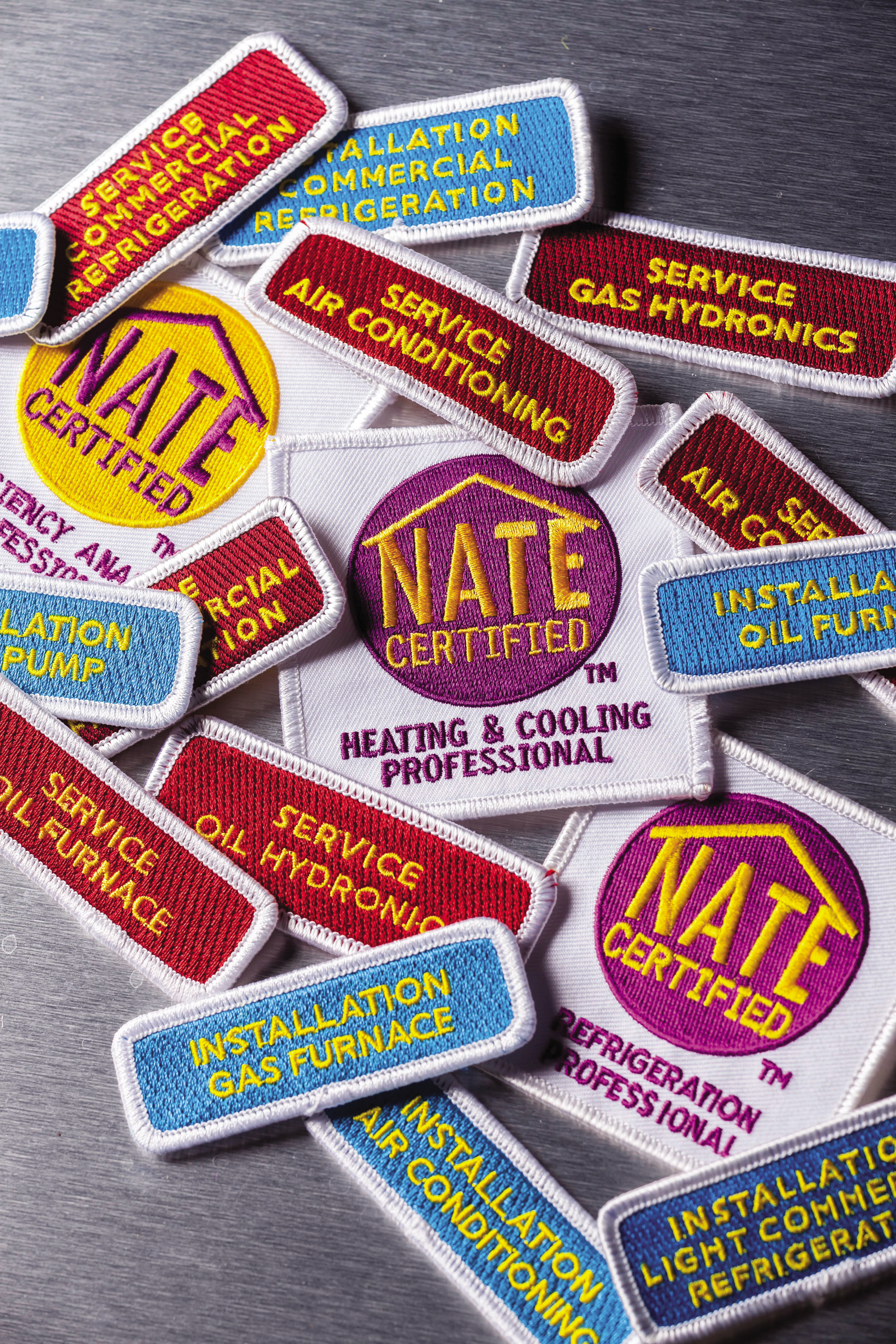Our History
Over 20 years ago a number of industry leaders came together to discuss concerns with the overall quality of field service and installation of HVACR equipment. From the perspective of manufacturing, distribution, and contracting, there were concerns that many individuals involved in servicing and installing systems and equipment lacked the proper knowledge and experience. And as a result, consumers and contractors were unhappy with recurring callbacks and added costs; manufacturers were receiving unnecessary and costly returns of equipment that were not defective; and technical advisors were plagued with repeated calls on service and installation questions that should have been common knowledge.
So in February 1997, North American Technician Excellence (NATE) was incorporated with organizational funding provided by manufacturers who guaranteed a bank loan through the Air-Conditioning & Refrigeration Institute (ARI) and the Gas Appliance Manufacturers Association (GAMA). The NATE coalition was established with representation from the contracting, distribution, manufacturing and utility communities as well as several trade associations. An interim board of trustees was appointed, while sector committees (precursor to today’s Technical Committee) provided advice on test development. Pilot tests were given and on November 8, 1997, the first NATE tests were administered nationally.
Soon, our partners at the Air Conditioning Contractors of America (ACCA) and the Refrigeration Service Engineers Society (RSES) unified their certification tests under the NATE umbrella. In 2000, our coalition of partners expanded to include North American Heating, Refrigeration & Air Conditioning Wholesalers Association (NHRAW), the Environmental Protection Agency (EPA) and other industry organizations. By the end of 2001, more than more than 10,000 technicians had earned NATE certification.
In the first half of the 2000s, NATE introduced electronic testing. Awareness and support of NATE began to grow. Manufacturers “dealer” programs began to include NATE as a key component. The U.S. Army awarded promotion points to soldiers who earned NATE certification and the Montgomery GI Bill approved NATE, making veterans eligible for reimbursement of test fees, a benefit that still exists today. And in a first of its kind decision in 2005, the city council of Terre Haute, Indiana amended its city contractor licensing code to require NATE certification.
The second half of the decade saw New Hampshire and Texas each include NATE as part of its state licensing process, while NATE expanded its specialty certification suite to include hydronic heating, and commercial refrigeration. During this time, we also introduced the highest-level NATE certification to date—the Senior Efficiency Analyst certification—to test a technician’s knowledge of the installation, service, maintenance, and repair of HVACR system to maintain high levels of energy efficiency. Consumer awareness of NATE was growing and NATE worked to build on that awareness with the launching of the www.hvacradvice.com consumer website to help homeowners find contractors with NATE-certified technicians.
Today, there are over 34,000 NATE-certified HVACR technicians providing world class service and installations throughout North America and the numbers continue to grow. Our growth over the years does not mean we can rest. Now, more than ever, we need to increase industry and consumer awareness of the benefits of technicians holding NATE certification. According to the U.S. Bureau of Labor Statistics Occupational Outlook Handbook, employment of heating, air conditioning, and refrigeration mechanics and installers is projected to grow 15 percent from 2016 to 2026, which is much faster than the average for all occupations. The results of a Workforce Trends survey conducted by Fluke Corp. in 2012 indicated that 85 percent of industry employers found it “difficult or very difficult” to find entry-level workers that had acceptable skills, while 38 percent of employers said candidates lacked an applicable degree or certification. Meanwhile, the 2013 American Home Comfort Survey found that roughly 30 percent homeowners who recently had new HVACR equipment installed had to have a technician come back to solve a problem.
That is why our new vision statement—to develop and recognize professional HVACR techncians—is as relevant today as it has ever been. Simply put, while there are many qualified technicians in the field, many more are needed. It is still necessary to raise the bar for the good of the industry, and NATE must continue to set the standards and certify the knowledge base for quality HVACR technicians. We know where we have been and know that the future of our industry is dependent on the continued growth in the number of NATE-certified technicians, for they provide the assurance of quality service, installation, enhanced system performance, and energy efficiency.




